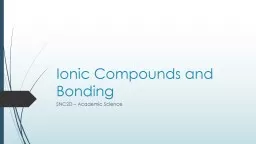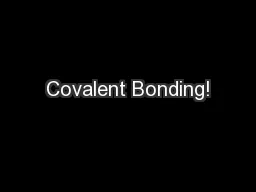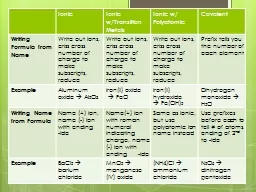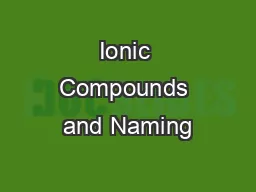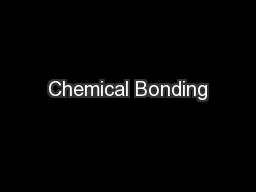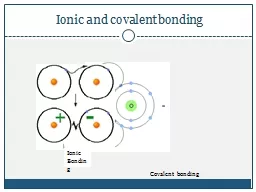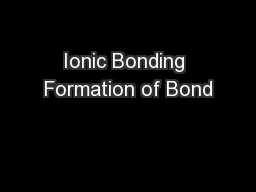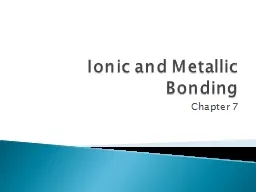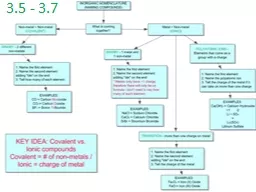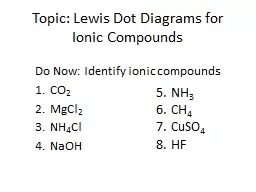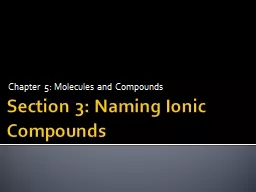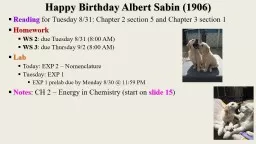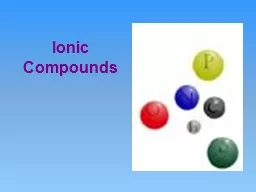PPT-Ionic Compounds and Bonding
Author : lindy-dunigan | Published Date : 2018-11-28
SNC2D Academic Science Learning Goals Use Lewis dot diagrams to illustrate how a compound forms between a metal and a nonmetal Ions are formed when electrons
Presentation Embed Code
Download Presentation
Download Presentation The PPT/PDF document "Ionic Compounds and Bonding" is the property of its rightful owner. Permission is granted to download and print the materials on this website for personal, non-commercial use only, and to display it on your personal computer provided you do not modify the materials and that you retain all copyright notices contained in the materials. By downloading content from our website, you accept the terms of this agreement.
Ionic Compounds and Bonding: Transcript
Download Rules Of Document
"Ionic Compounds and Bonding"The content belongs to its owner. You may download and print it for personal use, without modification, and keep all copyright notices. By downloading, you agree to these terms.
Related Documents

